Before GoPro: the evolution of action cameras
Today, GoPro is synonymous with action cameras. At the same time, Nikon, Canon, Sony, Xiaomi, Polaroid have analogues. It all began decades ago with a single technical solutions for specific goals. Let's look at the times when you couldn’t buy a camera for parachuting or a motorcycle in the nearest hardware store. Under the cut: on the "Formula 1", flights to the moon and live broadcast from the helmets of players in American football from the 1960s to the 2000s.
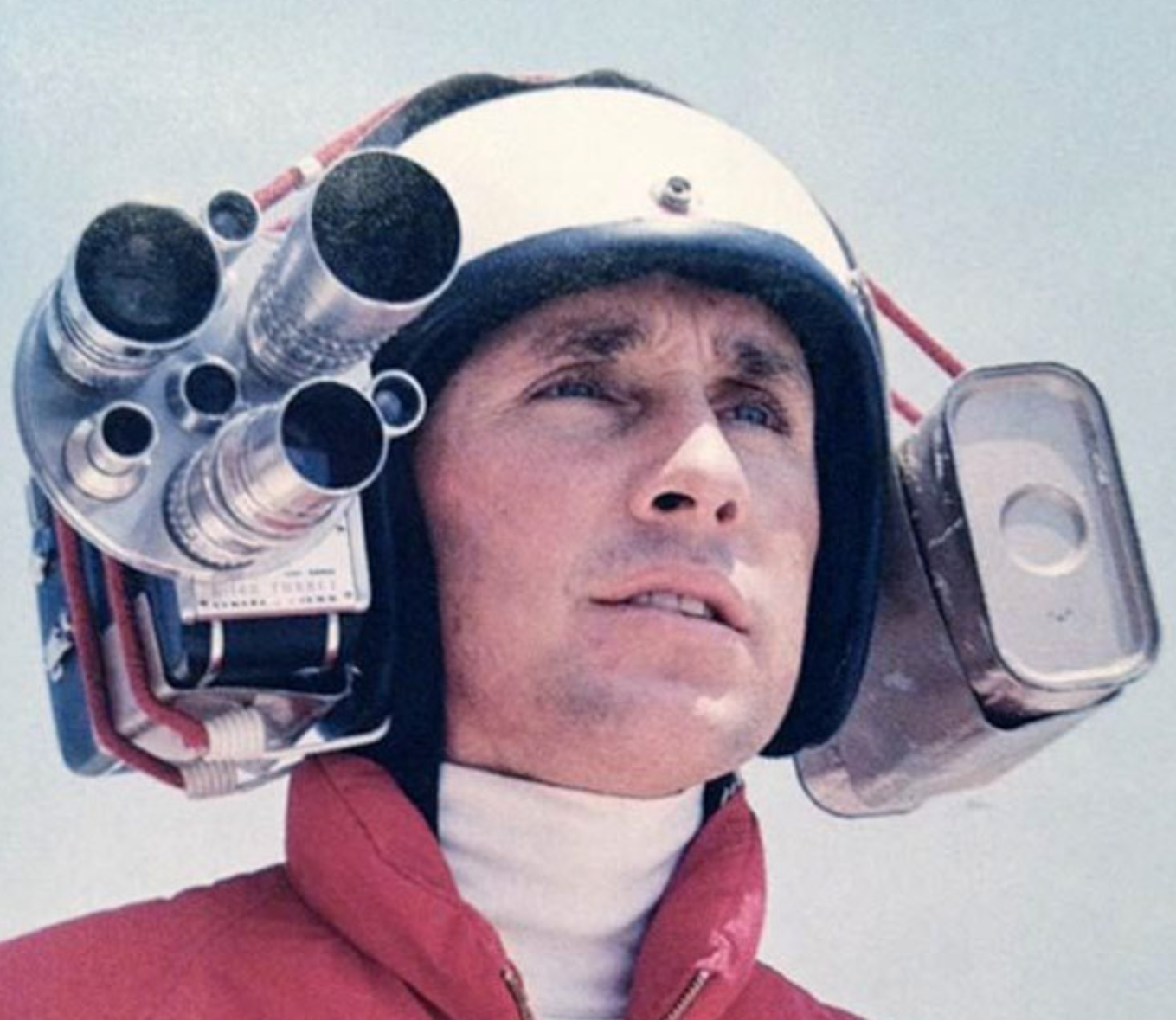
Long before the appearance of the first commercially available action camera, there were attempts to use cameras for shooting sports. For example, in 1911, when baseball player Hermann Schaefer was shooting a match between the teams of Washington and New York. It was sport that became the catalyst for action cameras.
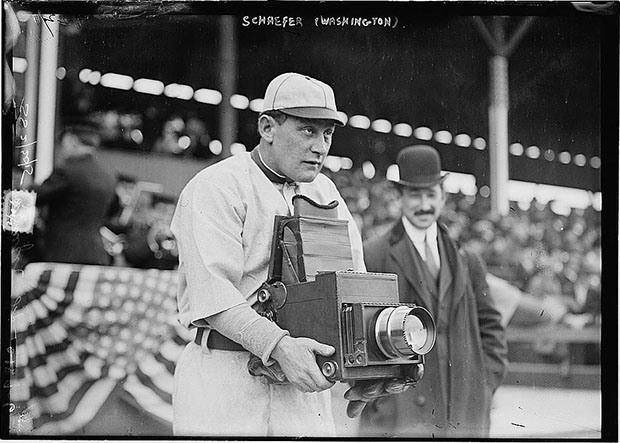
')
From 1961 to 1963 in the United States broadcast an adventure series about parachutists Ripcord . The role of one of the operators in it was performed by the skydiver Bob Sinclair, the most experienced at that time. The goal was to maximize the involvement of the audience in what is happening on the screen, it was necessary to get an emotional response. For this, we needed such a shooting, in which a person at the TV would feel like one of the paratroopers' team.
Since it was inconvenient to take it off the air, Sinclair used the following solution: he fixed the camera on the helmet. The head during a parachute jump is the most stable part of the human body. In the video - a fragment from the series in 1963, in which the shooting from the face of a parachutist is clearly visible, and not just from the ground or an airplane.
The camera is fixed on the helmet of Bob Sinclair, the “skydiving god,” as his colleagues called him.
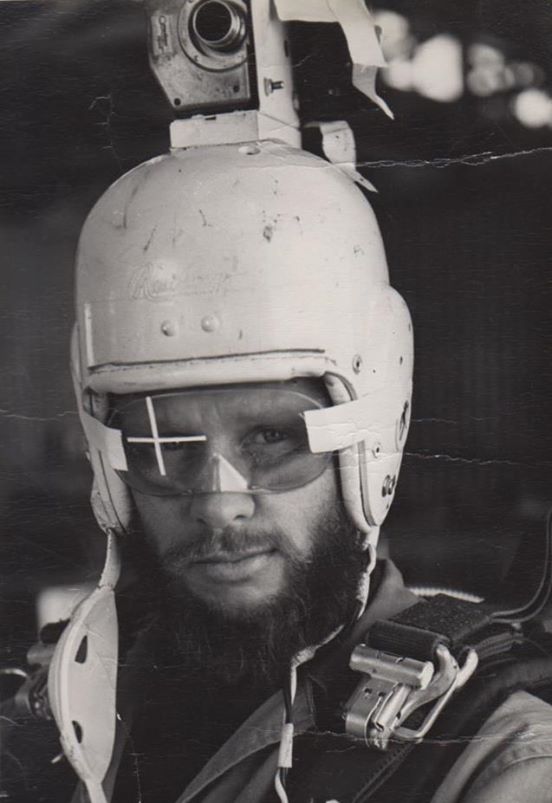
Photo: Mark Platt
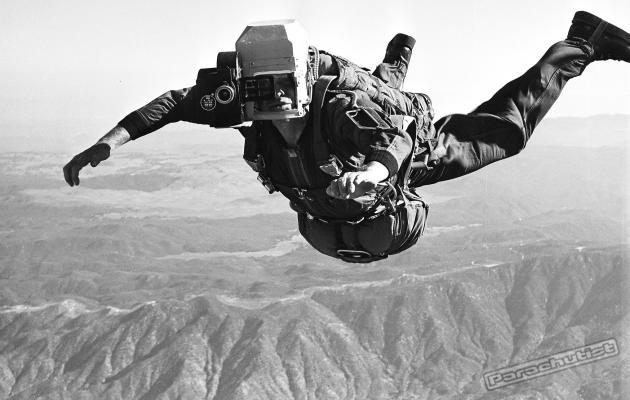
Photo: parachutistonline.com
Today, the camera on an American football player is a common thing. And for the first time a football helmet with a camera was used, apparently, in 1965. The photo below shows HelmetCam on the head of quarterback Jackie Lee during a training session of the Broncos team. In appearance, it is practically a factory solution for the production of General Dynamics Aerospace and Defense Corporation. Something it resembles the first mobile phones and a handheld vacuum cleaner.
About this helmet for many years, forgotten, until the pictures surfaced in 2015.

Photo: Broncos
Other athletes who came in handy on the helmet were Formula 1 racers. In those days, for filming films about them, systems were used that can be described as “operator on the hood, fixed with the help of sticks and ropes”.
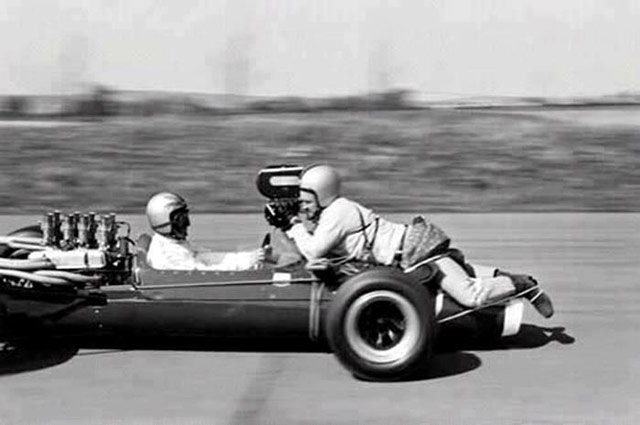
Photo: kottke.org
Three-time world champion Jackie Stewart , a former pilot of 9 seasons from 1965 to 1973, in 1966, worked on the camera on a helmet, which allows shooting from the first person. The first photo of Stuart with a Nikon camera dates back to 1966 - this frame was taken at the Monaco Grand Prix. But, unfortunately, in real races he did not use it, the photo was taken at the time of preparation or a test run.
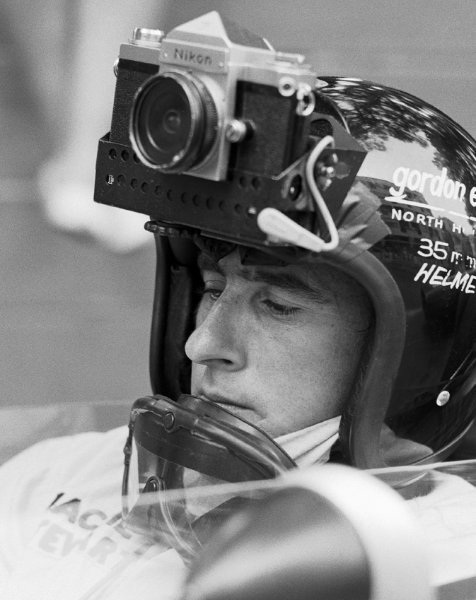
Photo: kottke.org
In this photo - an even more complex decision on Stuart's head: a camera with a system of several lenses at the right ear and a battery at the left, balancing each other. With such a helmet in real races it is impossible to accurately participate - it is too dangerous for both the operator and others.
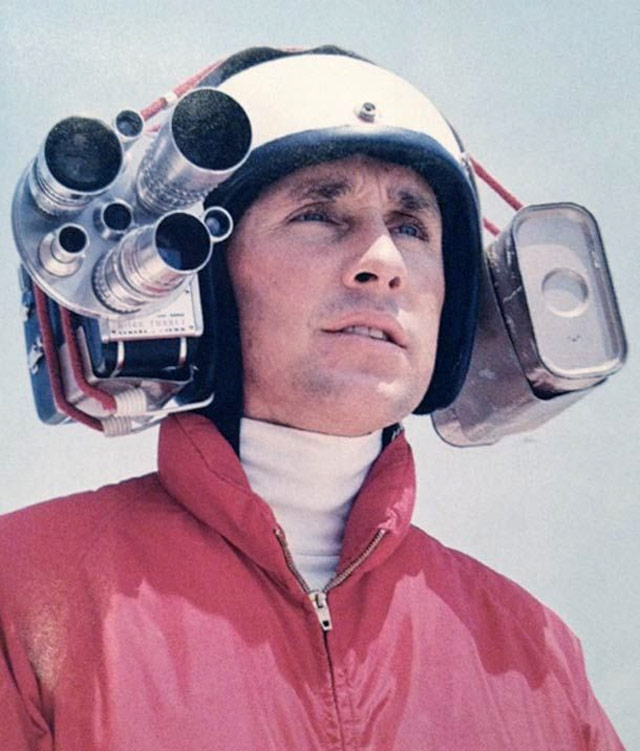
Photo: kottke.org
After the decisions that were made above, the camera tied to the head of actor Steve McQueen with adhesive tape looks like a catastrophe. This is how they shot first-person shots in the 1971 film Le Mans , where McQueen played the current champion from the Gulf Porsche team fighting for gold in the 24-hour race.
Worked on the film during the 1970 Le Mans . Le Mans is the oldest of the automobile races existing today, it has been carried out since 1923 on the Sart highway, which consists of purpose-built stretches and general purpose roads. Check-in lasts 24 hours, while the car must work the whole day, and the pilots change every few hours. Le Mans was conceived as a race, able to identify not the fastest, but the most reliable cars.
Steve McQueen, who was an amateur of both cars and motorcycles, was eager to make a film about these endurance races so much that he organized his own film company - Solar Productions. This moment is important for understanding the following case of his work as a hero, and an operator with a camera on his head.
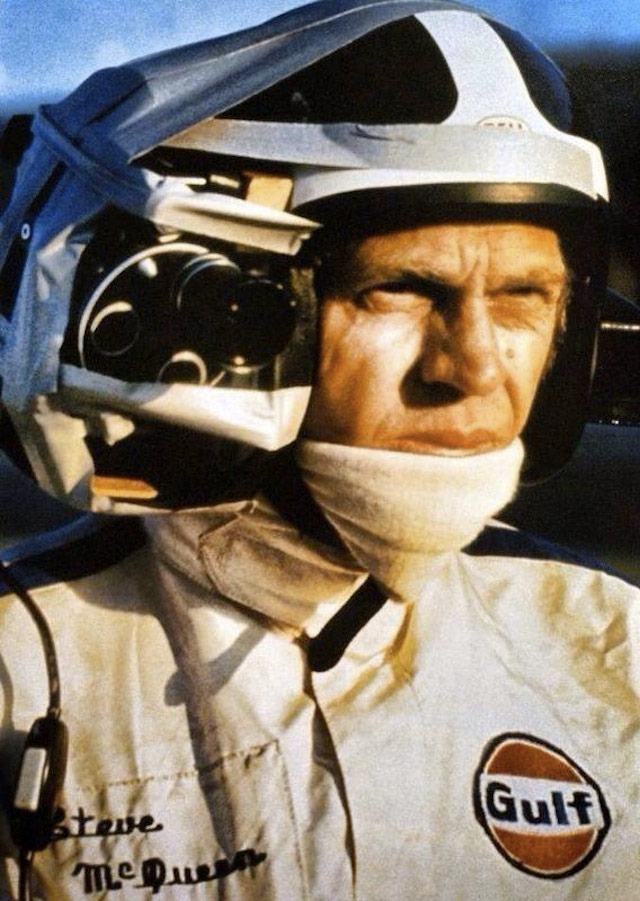
Le Mans Movie Trailer
In the late 1960s, Bruce Brown , whose voice in the animated series Sponge Bob in the original speaks the narrator, together with his wife in Japan rented a Honda scooter and felt the spirit of freedom that bikers talk about. Upon returning to California, Brown bought a used Triumph Cub motorcycle, and then began to participate in races and "hooked" his surfer friends on the bikes.
“I remember how I watched the races on the shred of Ascot Park . I spoke with several riders and was amazed at how good the guys are. Not many people were riding motorcycles then. I thought it would be great to make a film about this sport and about the people involved in it, ” Brown said .
The problem was in financing. A few years before, in 1966, Brown made the film " Endless Summer " about surfing. But this fact did not help attract investors. Then he talked with McQueen, spoke about the concept of the film "Every Sunday." The actor liked the idea. It was only then that Brown said that he wanted McQueen to finance the filming: “He laughed:“ I am shooting films, ”and not funding them.” Then I jokingly replied: "Well, then you can not act in this film." The next day, McQueen called me and told me to start work. "
During the filming, the cameras were wearing helmets for several bikers. This is one of the first "mass" cases of using the method in films. In the video below, with a mark of 5:27, you can see first-person shots that are included in "Every Sunday."
Full movie On any sunday
Movie Trailer On Any Sunday
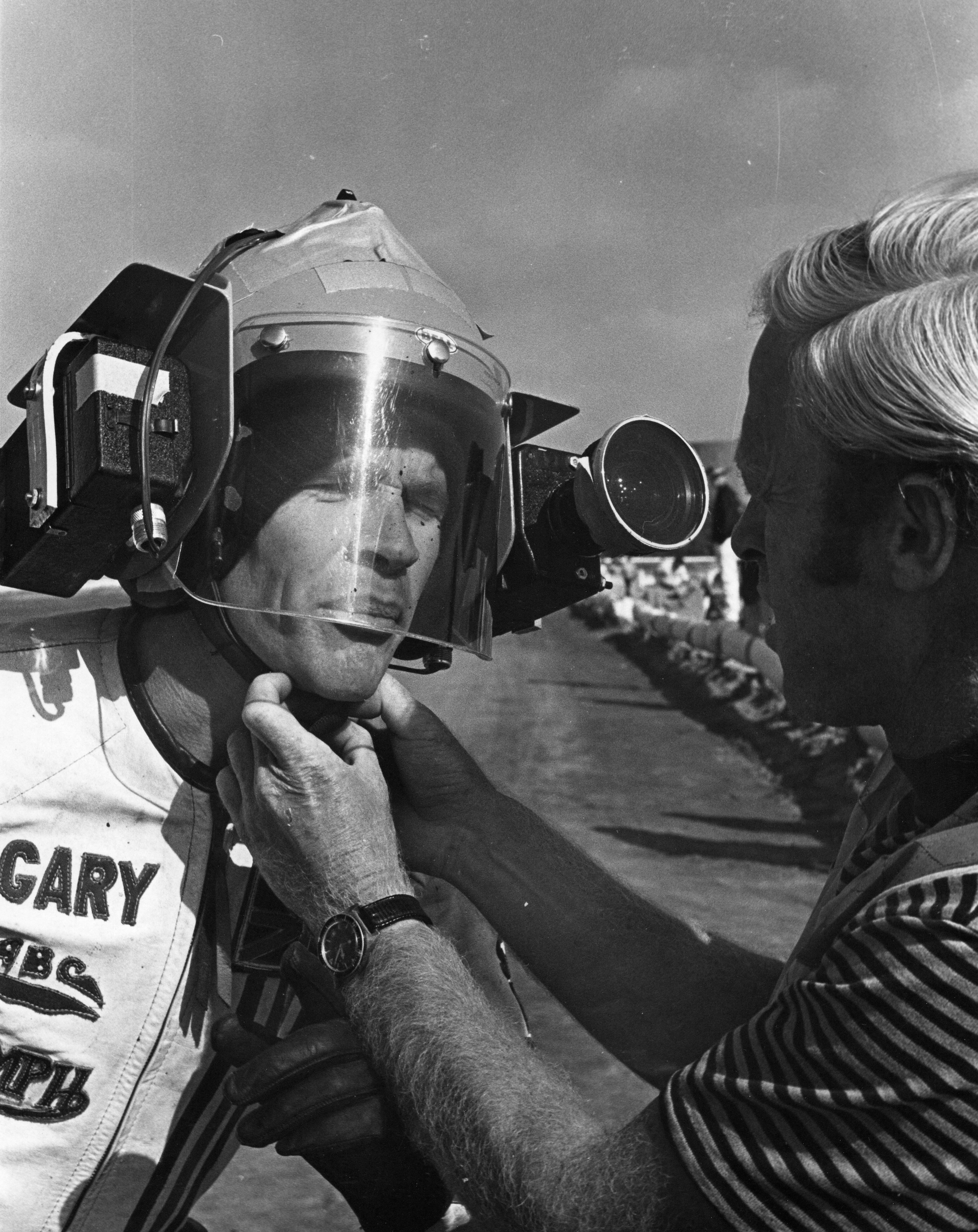
Photo: brucebrownfilms.com

Photo: brucebrownfilms.com
The first photograph of the Earth from space was taken on October 24, 1946 with a camera mounted on a German V-2 ballistic missile launched by the Americans. The movie camera charged with a 35 mm film every one and a half seconds made one frame. Until then, the maximum height from which the Earth’s surface was shot was 22 kilometers - this was a photo from an Explorer II balloon made in 1935. Now, scientists have fallen into the hands of scientists from a height of up to 105 kilometers. Before 1950, the Americans took more than 1,000 photographs of the Earth, launching the V-2 up to 160 kilometers.
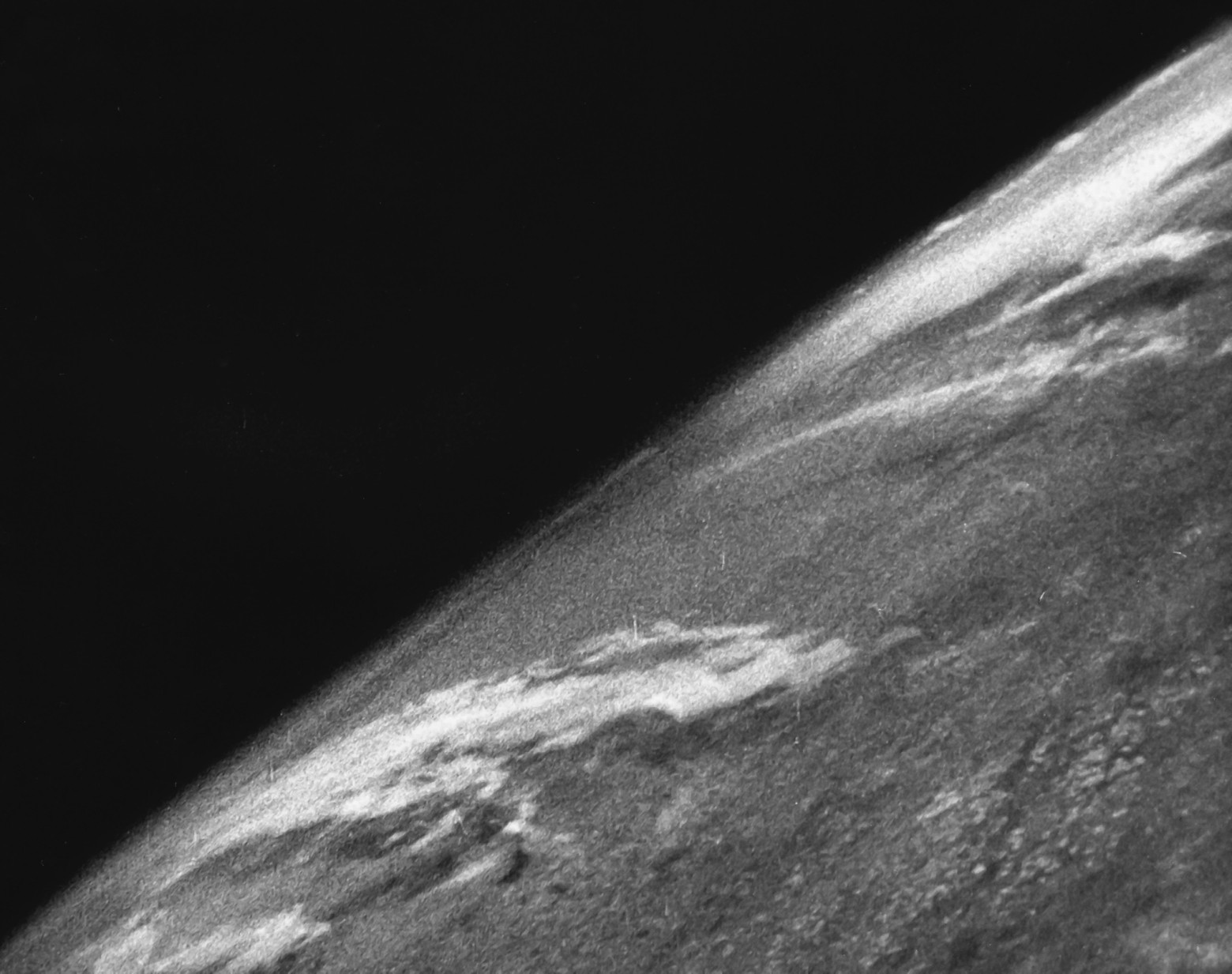
The first photo of the Earth from space was made on film on October 24, 1946 with a V-2 ballistic missile
Video from the camera on the "V-2"
March 18, 1965, man first entered the open space . It was Alexey Leonov, who set off on the Voskhod-2 ship with Pavel Belyaev.
In the 1980s, he wrote about training on the Tu-104 plane, which allows microgravity to be achieved: “Then I had to learn how to move away from the airlock correctly. After the departure, I photographed the ship with a breast camera. Many times we took to the air, until I achieved a smooth departure from the ship and the approach to it. ”
A miniature Ajax camera was mounted on the spacesuit of Alexey Leonov. It was assumed that the astronaut will take pictures with the help of the shutter, operated by a rope. The gloves of the spacesuit swelled, and he could not do it. But he was able to use the camera, and the process was filmed with two cameras installed on the ship. The results of the shooting is preserved .
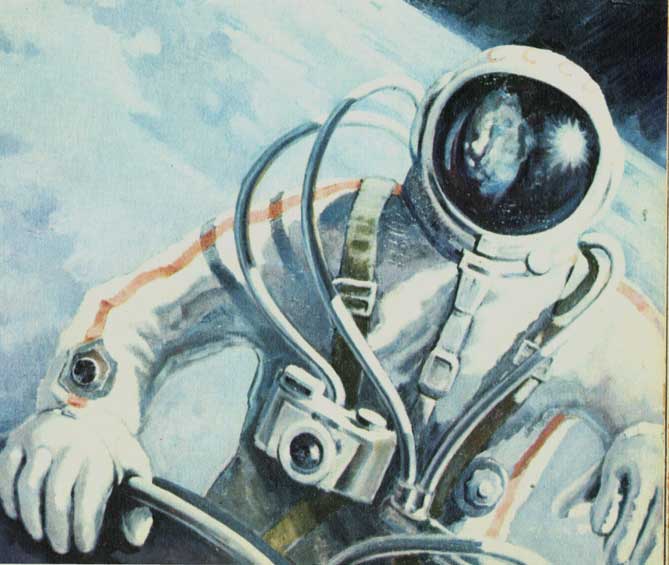
Illustration: I go out into space
Chronicle of a color camera installed on the "Voskhod-2"
Trailer for the film "Time of the first"
Camera "Ajax" - the product of the work of specialists from the KGB , designed to conduct secret photography. The security services of Russia have been working on such devices since the 1940s, and in 1945 an independent subdivision for the design and production of special photographic equipment appeared, which grew to the size of a specialized laboratory as part of the Operational and Technical Directorate of the KGB of the USSR. Ajax series cameras could take photos using coat buttons or women's brooches, and they were put into action with a disguised cable.

Ajax-8 camera with A-1 lenses (left) and A-4. A source

Hidden in the belt and under the button of the coat camera. Photo: Keith Melton Spy Museum .
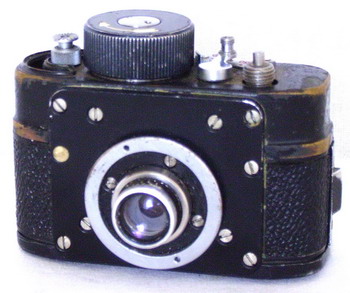
Ajax-12, which after the “cold war” went on sale as the “Zenith” of the MF-1. Photo: rus.camera.ru
The first camera on the moon was Hasselblad . In 1969, the Hasselblad 500EL with an electric drive, specially upgraded for NASA, was installed on the suit of Neil Armstrong during the Apollo 11 mission. The difficulty was that the camera was aimed by the movement of the cosmonaut’s entire body. Armstrong hid the camera that was on the moon in the storage room, and his wife, after the death of the astronaut, found it and handed it to the museum .
The reason for choosing Hasselblad was the ability to quickly change not only the lens and viewfinders, but also the type of photographic material: the cameras used cassette-type cassettes. NASA has used the Hasselblad 500C since 1962, including in the Mercury and Gemini programs. A mirror and a viewfinder were removed from the camera that was sent to the moon , a special Zeiss Biogon 5.6 / 60 lens was installed and equipped with a glass screen. The mechanism worked in a vacuum, so that a sealed box was not needed.
Special cassettes were also developed for the moon, capable of making 200 black-and-white or 160 color photographs.
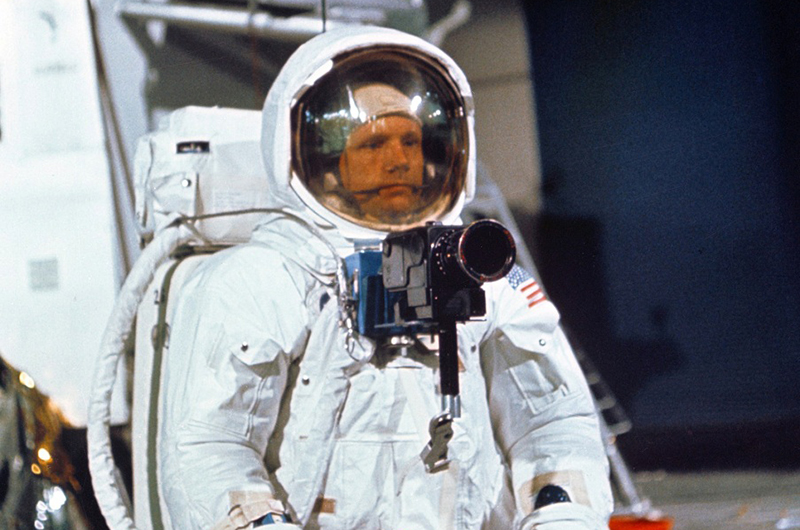
Photo: NASA
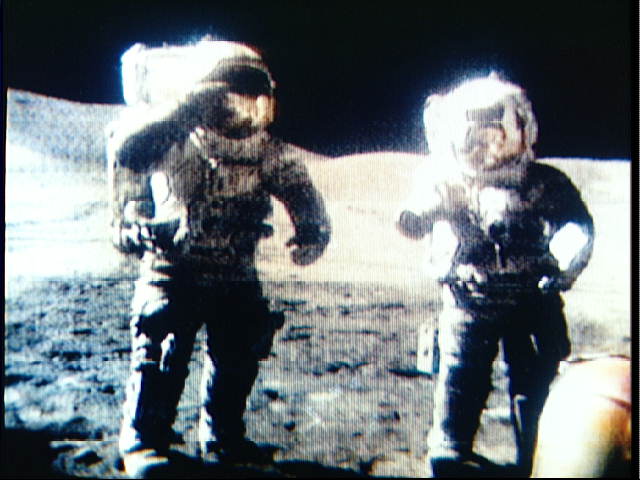
Photo: NASA
This photo shows astronaut Alan Bean, a member of the Apollo 12 expedition in 1969. The Hasselblad camera is attached to the spacesuit.
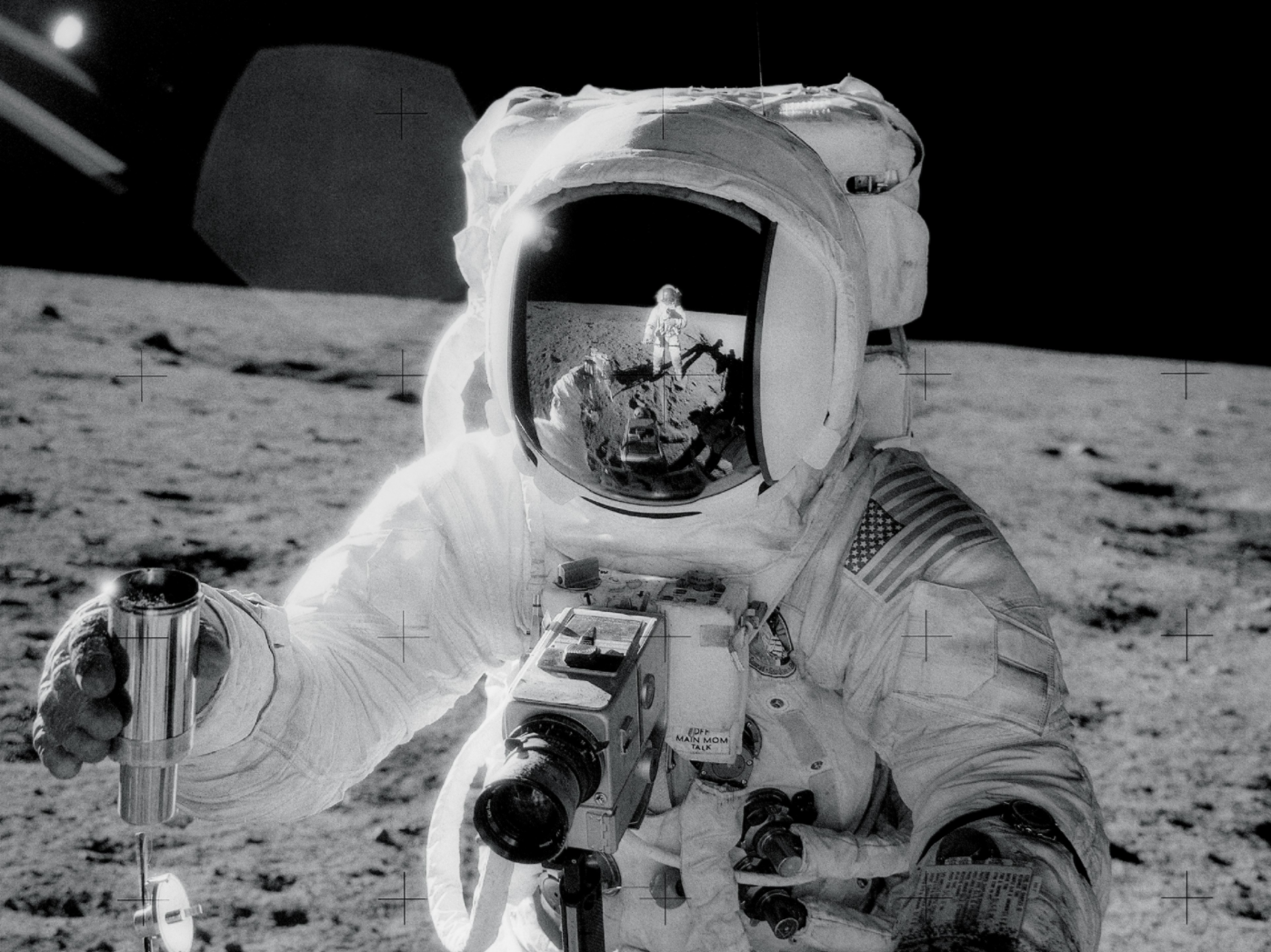
Photo: NASA

Photo: NASA
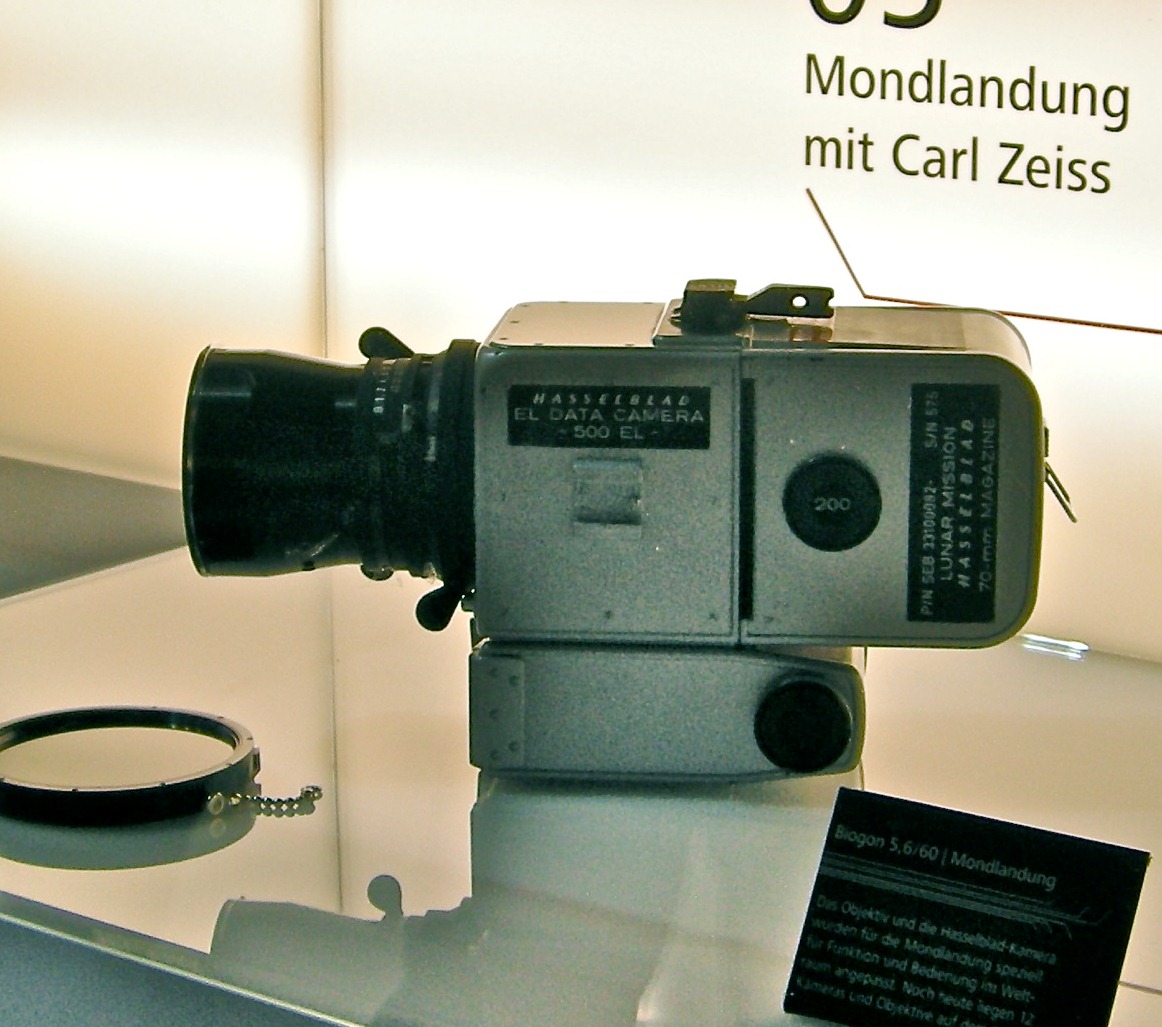
Hasselblad 500 EL Data
Cameras, as a rule, did not return to Earth, because they were superfluous. Therefore, the camera that visited the moon was sold in 2014 for $ 910,000 .

The next stage in the development of action cameras was the Canon Ci-10. “Sometimes the future of photography appears in the strangest places. For example, in the New York Coliseum at the International Conference on Security among locks, security alarms and surveillance systems - in the form of a tiny video camera. This is a Canon Ci-10, a camera no larger than a pack of cigarettes, ”wrote the New York Times in 1985. The 283 g camera attracted attention by the fact that it could fit in the pocket of the investigator's vest in order to take notes without the knowledge of the suspect. Instead of a film, a magnetic tape was used in the chamber.
In 1986, Ci-10 with radio signal transmission was used for the first time for live broadcast on television from operator Dirk Garcia’s helmet (Dirk Garcia) to ABC channel.
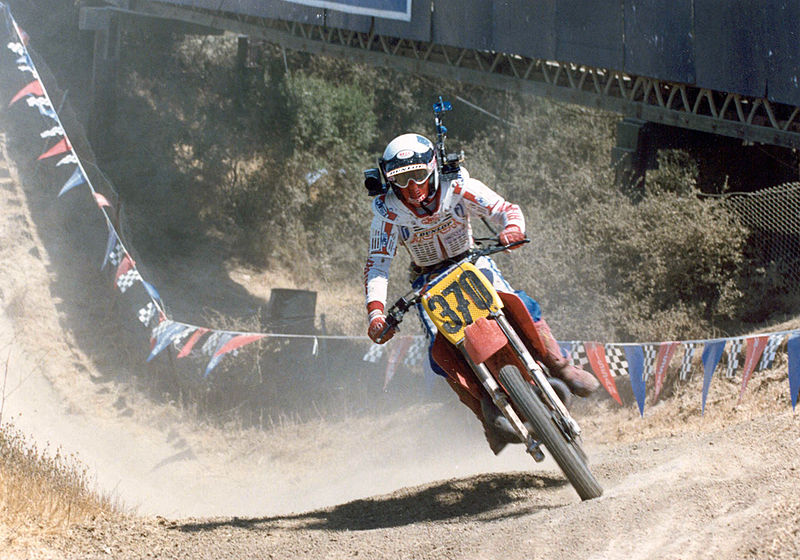
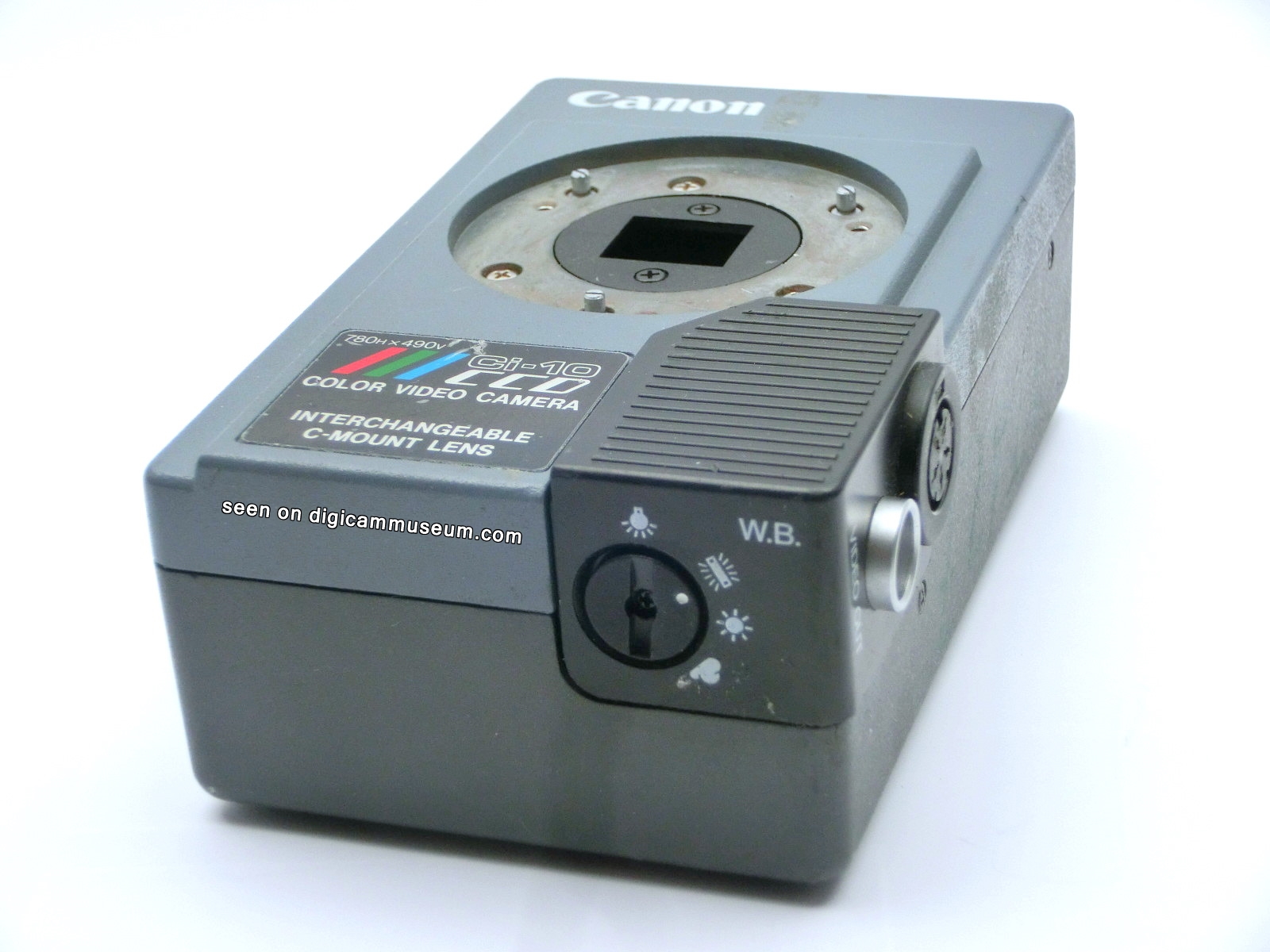
Another of the pioneers in the field of action cameras was Mark Schulze. In 1987, Schulze, he shot " The Great Mountain Biking Video " - a video with mountain biking instructions for lovers. And, like other developers of similar solutions, he didn’t patent his idea: “We wanted to make the best mountain bike videos of all time. This is what we did. We left all sorts of engineering stuff to people like GoPro guys who created these miniature cameras that can be mounted on a helmet, on the hood of a car, on a surfboard or boat. ”
Schulze installed a VHS camera on the helmet, put the VCR in a backpack and connected them with an RCA cable.
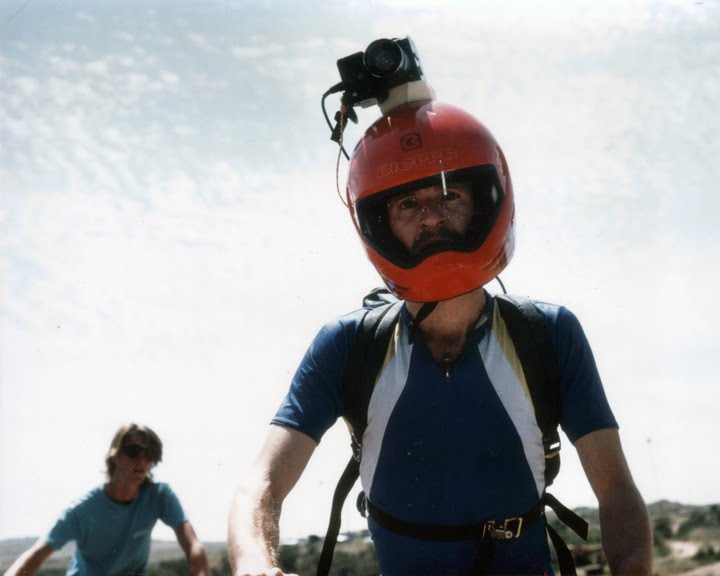
Action cameras can be worn not only by people. In 1986, biologist Greg Marshall created Crittercam: a camera that was designed to capture fast movements and actions. The camera allowed to shoot animals in their natural habitat, without the influence of people on their behavior. Watch the video from 3 minutes.
In 1991, a helmet for 200 thousand dollars was used to shoot American football on behalf of the player. The cylindrical chamber was attached to the right ear of an athlete on a Riddel VSR-3 helmet. The antenna was mounted on the helmet on top. The battery and transmitter were installed in a frame (equipment: overhead). This camera was used to broadcast the game live.
An expensive novelty for shooting from the first person and live broadcast is a unique case at the time, which was supposed to immerse the viewer into the game. Today, GoPro on the player is common .

Photo: worldleagueofamericanfootball.com
In 2002, Nicholas Woodman founded GoPro. During a trip to Australia and Indonesia with a surfboard, Woodman decided to develop and start selling straps for attaching to the body for the camera so that athletes like him could capture the most interesting moments. His mother lent him $ 35,000 and a sewing machine, his father - another $ 20,000. And the GoPro's first camera was a 35mm film device with fasteners on the wrist.
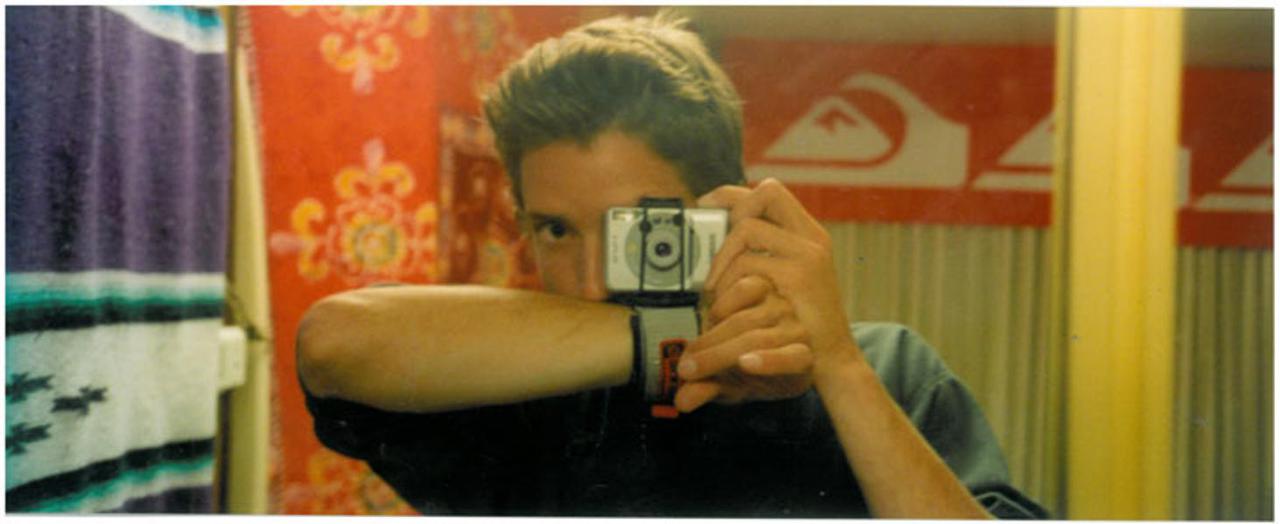
Nick Woodman from the first GoPro
November 6, 2015 UP Aerospace Inc. launched a six-meter long SL-10 rocket to a height of 120 kilometers with a GoPro mounted on the body. Space was shot back in 1946 with the "V-2" and a unique movie camera, and seventy years later, a commercially available commercial solution appeared on the market.
Action cameras not only got out of the category of unique solutions, but also fell in price to mass accessibility. Even teenagers can afford them. For example, Xiaomi recently introduced an extreme camera for $ 64 with cat hardware , bringing GoPro shares down by 4.9% .
Today we have a whole market for which iON, Sony, Canon, Nikon, Polaroid and Xiaomi are struggling with GoPro. Existing technologies allow the operator to make a drone, which on autopilot follows the host on a snow-covered slope. And the driving force behind the development of action cameras based on history was two factors: the need for such cameras for research purposes, including for work in space, and the desire to shoot gaming and extreme sports.

Long before the appearance of the first commercially available action camera, there were attempts to use cameras for shooting sports. For example, in 1911, when baseball player Hermann Schaefer was shooting a match between the teams of Washington and New York. It was sport that became the catalyst for action cameras.

')
From 1961 to 1963 in the United States broadcast an adventure series about parachutists Ripcord . The role of one of the operators in it was performed by the skydiver Bob Sinclair, the most experienced at that time. The goal was to maximize the involvement of the audience in what is happening on the screen, it was necessary to get an emotional response. For this, we needed such a shooting, in which a person at the TV would feel like one of the paratroopers' team.
Since it was inconvenient to take it off the air, Sinclair used the following solution: he fixed the camera on the helmet. The head during a parachute jump is the most stable part of the human body. In the video - a fragment from the series in 1963, in which the shooting from the face of a parachutist is clearly visible, and not just from the ground or an airplane.
The camera is fixed on the helmet of Bob Sinclair, the “skydiving god,” as his colleagues called him.

Photo: Mark Platt

Photo: parachutistonline.com
Today, the camera on an American football player is a common thing. And for the first time a football helmet with a camera was used, apparently, in 1965. The photo below shows HelmetCam on the head of quarterback Jackie Lee during a training session of the Broncos team. In appearance, it is practically a factory solution for the production of General Dynamics Aerospace and Defense Corporation. Something it resembles the first mobile phones and a handheld vacuum cleaner.
About this helmet for many years, forgotten, until the pictures surfaced in 2015.

Photo: Broncos
Other athletes who came in handy on the helmet were Formula 1 racers. In those days, for filming films about them, systems were used that can be described as “operator on the hood, fixed with the help of sticks and ropes”.

Photo: kottke.org
Three-time world champion Jackie Stewart , a former pilot of 9 seasons from 1965 to 1973, in 1966, worked on the camera on a helmet, which allows shooting from the first person. The first photo of Stuart with a Nikon camera dates back to 1966 - this frame was taken at the Monaco Grand Prix. But, unfortunately, in real races he did not use it, the photo was taken at the time of preparation or a test run.

Photo: kottke.org
In this photo - an even more complex decision on Stuart's head: a camera with a system of several lenses at the right ear and a battery at the left, balancing each other. With such a helmet in real races it is impossible to accurately participate - it is too dangerous for both the operator and others.

Photo: kottke.org
After the decisions that were made above, the camera tied to the head of actor Steve McQueen with adhesive tape looks like a catastrophe. This is how they shot first-person shots in the 1971 film Le Mans , where McQueen played the current champion from the Gulf Porsche team fighting for gold in the 24-hour race.
Worked on the film during the 1970 Le Mans . Le Mans is the oldest of the automobile races existing today, it has been carried out since 1923 on the Sart highway, which consists of purpose-built stretches and general purpose roads. Check-in lasts 24 hours, while the car must work the whole day, and the pilots change every few hours. Le Mans was conceived as a race, able to identify not the fastest, but the most reliable cars.
Steve McQueen, who was an amateur of both cars and motorcycles, was eager to make a film about these endurance races so much that he organized his own film company - Solar Productions. This moment is important for understanding the following case of his work as a hero, and an operator with a camera on his head.

Le Mans Movie Trailer
In the late 1960s, Bruce Brown , whose voice in the animated series Sponge Bob in the original speaks the narrator, together with his wife in Japan rented a Honda scooter and felt the spirit of freedom that bikers talk about. Upon returning to California, Brown bought a used Triumph Cub motorcycle, and then began to participate in races and "hooked" his surfer friends on the bikes.
“I remember how I watched the races on the shred of Ascot Park . I spoke with several riders and was amazed at how good the guys are. Not many people were riding motorcycles then. I thought it would be great to make a film about this sport and about the people involved in it, ” Brown said .
The problem was in financing. A few years before, in 1966, Brown made the film " Endless Summer " about surfing. But this fact did not help attract investors. Then he talked with McQueen, spoke about the concept of the film "Every Sunday." The actor liked the idea. It was only then that Brown said that he wanted McQueen to finance the filming: “He laughed:“ I am shooting films, ”and not funding them.” Then I jokingly replied: "Well, then you can not act in this film." The next day, McQueen called me and told me to start work. "
During the filming, the cameras were wearing helmets for several bikers. This is one of the first "mass" cases of using the method in films. In the video below, with a mark of 5:27, you can see first-person shots that are included in "Every Sunday."
Full movie On any sunday
Movie Trailer On Any Sunday

Photo: brucebrownfilms.com

Photo: brucebrownfilms.com
The first photograph of the Earth from space was taken on October 24, 1946 with a camera mounted on a German V-2 ballistic missile launched by the Americans. The movie camera charged with a 35 mm film every one and a half seconds made one frame. Until then, the maximum height from which the Earth’s surface was shot was 22 kilometers - this was a photo from an Explorer II balloon made in 1935. Now, scientists have fallen into the hands of scientists from a height of up to 105 kilometers. Before 1950, the Americans took more than 1,000 photographs of the Earth, launching the V-2 up to 160 kilometers.

The first photo of the Earth from space was made on film on October 24, 1946 with a V-2 ballistic missile
Video from the camera on the "V-2"
March 18, 1965, man first entered the open space . It was Alexey Leonov, who set off on the Voskhod-2 ship with Pavel Belyaev.
In the 1980s, he wrote about training on the Tu-104 plane, which allows microgravity to be achieved: “Then I had to learn how to move away from the airlock correctly. After the departure, I photographed the ship with a breast camera. Many times we took to the air, until I achieved a smooth departure from the ship and the approach to it. ”
A miniature Ajax camera was mounted on the spacesuit of Alexey Leonov. It was assumed that the astronaut will take pictures with the help of the shutter, operated by a rope. The gloves of the spacesuit swelled, and he could not do it. But he was able to use the camera, and the process was filmed with two cameras installed on the ship. The results of the shooting is preserved .

Illustration: I go out into space
Chronicle of a color camera installed on the "Voskhod-2"
Trailer for the film "Time of the first"
Camera "Ajax" - the product of the work of specialists from the KGB , designed to conduct secret photography. The security services of Russia have been working on such devices since the 1940s, and in 1945 an independent subdivision for the design and production of special photographic equipment appeared, which grew to the size of a specialized laboratory as part of the Operational and Technical Directorate of the KGB of the USSR. Ajax series cameras could take photos using coat buttons or women's brooches, and they were put into action with a disguised cable.

Ajax-8 camera with A-1 lenses (left) and A-4. A source

Hidden in the belt and under the button of the coat camera. Photo: Keith Melton Spy Museum .

Ajax-12, which after the “cold war” went on sale as the “Zenith” of the MF-1. Photo: rus.camera.ru
The first camera on the moon was Hasselblad . In 1969, the Hasselblad 500EL with an electric drive, specially upgraded for NASA, was installed on the suit of Neil Armstrong during the Apollo 11 mission. The difficulty was that the camera was aimed by the movement of the cosmonaut’s entire body. Armstrong hid the camera that was on the moon in the storage room, and his wife, after the death of the astronaut, found it and handed it to the museum .
The reason for choosing Hasselblad was the ability to quickly change not only the lens and viewfinders, but also the type of photographic material: the cameras used cassette-type cassettes. NASA has used the Hasselblad 500C since 1962, including in the Mercury and Gemini programs. A mirror and a viewfinder were removed from the camera that was sent to the moon , a special Zeiss Biogon 5.6 / 60 lens was installed and equipped with a glass screen. The mechanism worked in a vacuum, so that a sealed box was not needed.
Special cassettes were also developed for the moon, capable of making 200 black-and-white or 160 color photographs.

Photo: NASA

Photo: NASA
This photo shows astronaut Alan Bean, a member of the Apollo 12 expedition in 1969. The Hasselblad camera is attached to the spacesuit.

Photo: NASA

Photo: NASA

Hasselblad 500 EL Data
Cameras, as a rule, did not return to Earth, because they were superfluous. Therefore, the camera that visited the moon was sold in 2014 for $ 910,000 .

The next stage in the development of action cameras was the Canon Ci-10. “Sometimes the future of photography appears in the strangest places. For example, in the New York Coliseum at the International Conference on Security among locks, security alarms and surveillance systems - in the form of a tiny video camera. This is a Canon Ci-10, a camera no larger than a pack of cigarettes, ”wrote the New York Times in 1985. The 283 g camera attracted attention by the fact that it could fit in the pocket of the investigator's vest in order to take notes without the knowledge of the suspect. Instead of a film, a magnetic tape was used in the chamber.
In 1986, Ci-10 with radio signal transmission was used for the first time for live broadcast on television from operator Dirk Garcia’s helmet (Dirk Garcia) to ABC channel.


Another of the pioneers in the field of action cameras was Mark Schulze. In 1987, Schulze, he shot " The Great Mountain Biking Video " - a video with mountain biking instructions for lovers. And, like other developers of similar solutions, he didn’t patent his idea: “We wanted to make the best mountain bike videos of all time. This is what we did. We left all sorts of engineering stuff to people like GoPro guys who created these miniature cameras that can be mounted on a helmet, on the hood of a car, on a surfboard or boat. ”
Schulze installed a VHS camera on the helmet, put the VCR in a backpack and connected them with an RCA cable.

Action cameras can be worn not only by people. In 1986, biologist Greg Marshall created Crittercam: a camera that was designed to capture fast movements and actions. The camera allowed to shoot animals in their natural habitat, without the influence of people on their behavior. Watch the video from 3 minutes.
In 1991, a helmet for 200 thousand dollars was used to shoot American football on behalf of the player. The cylindrical chamber was attached to the right ear of an athlete on a Riddel VSR-3 helmet. The antenna was mounted on the helmet on top. The battery and transmitter were installed in a frame (equipment: overhead). This camera was used to broadcast the game live.
An expensive novelty for shooting from the first person and live broadcast is a unique case at the time, which was supposed to immerse the viewer into the game. Today, GoPro on the player is common .

Photo: worldleagueofamericanfootball.com
In 2002, Nicholas Woodman founded GoPro. During a trip to Australia and Indonesia with a surfboard, Woodman decided to develop and start selling straps for attaching to the body for the camera so that athletes like him could capture the most interesting moments. His mother lent him $ 35,000 and a sewing machine, his father - another $ 20,000. And the GoPro's first camera was a 35mm film device with fasteners on the wrist.

Nick Woodman from the first GoPro
November 6, 2015 UP Aerospace Inc. launched a six-meter long SL-10 rocket to a height of 120 kilometers with a GoPro mounted on the body. Space was shot back in 1946 with the "V-2" and a unique movie camera, and seventy years later, a commercially available commercial solution appeared on the market.
Action cameras not only got out of the category of unique solutions, but also fell in price to mass accessibility. Even teenagers can afford them. For example, Xiaomi recently introduced an extreme camera for $ 64 with cat hardware , bringing GoPro shares down by 4.9% .
Today we have a whole market for which iON, Sony, Canon, Nikon, Polaroid and Xiaomi are struggling with GoPro. Existing technologies allow the operator to make a drone, which on autopilot follows the host on a snow-covered slope. And the driving force behind the development of action cameras based on history was two factors: the need for such cameras for research purposes, including for work in space, and the desire to shoot gaming and extreme sports.
Source: https://habr.com/ru/post/370945/
All Articles